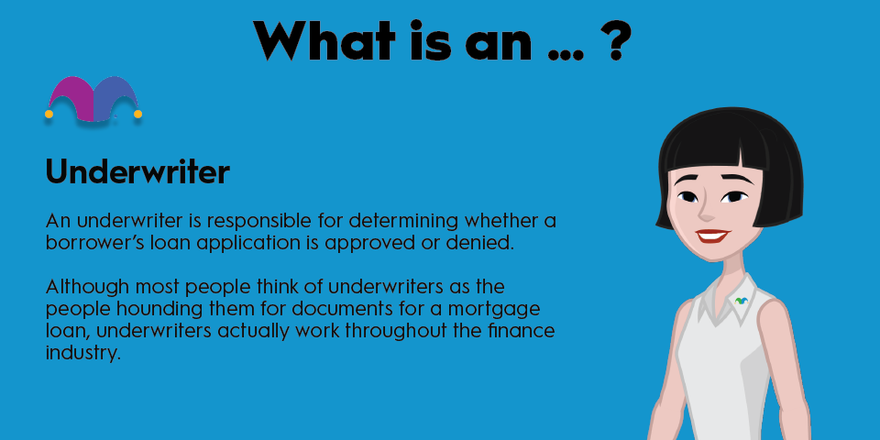What Is an Underwriter?
Many financial activities are risky for someone involved in the transaction. Whether that’s the person lending money or the one insuring a building, it’s important to fully understand the exact risk involved. That’s where an underwriter comes in.

What is it?
What is an underwriter?
Although most people think of underwriters as the people hounding them for documents for a mortgage loan, underwriters actually work throughout the finance industry. Anywhere there’s a risk, there’s an underwriter to explore and quantify the risk. Underwriters are active in banking, but they’re also an important part of the insurance world, as well as the world of securities trading.
When it comes to underwriting initial public offerings (IPOs) or reselling debt securities, underwriters are vital in determining the value of an investment and ensuring the success of the investment for the person or institution providing the capital.
Where did it come from?
Where did underwriting come from?
Long ago, the most efficient way to move big batches of goods long distances was to go by sea, but there weren’t GPS systems or radios to help with navigation or to help predict when a storm might blow up. Sailors and merchants were at the mercy of the sea. Because the mercy of the sea wasn’t a great business model, some people realized they could basically assume the risk that the ship wouldn’t make it to port in exchange for a percentage of the profit, or a set fee, if the ship made it safely.
The people who signed these contracts that became the earliest merchant insurance policies (dating back to 1350) were known as underwriters. As they do today, they evaluated the risks involved and set a price to assume the risk if the ventures failed. More often than not, they would turn a nice profit on the shipment, which helped offset the occasional ship lost at sea.
Modern underwriting is just an extension of the same system. An underwriter examines the risk, balances it against the reward, and determines what it’s worth to their company to take a chance on it. That goes for mortgages, insurance policies, and securities.
Types?
What types of underwriters are there?
There are three major types of underwriters. They essentially all do the same thing: determine risk and how much it’s worth to their company. The most common is the mortgage underwriter. Their job is to determine the size of the risk posed by a borrower, whether for a home purchase or a commercial real estate parcel. They determine if the borrower is creditworthy and set a mortgage rate to compensate for the risk they represent.
Another well-known underwriter is the insurance underwriter. Like the mortgage underwriter, the insurance underwriter determines the risk of someone filing a claim and the potential cost to a company. The insurance underwriter then bases the premiums on that risk.
A securities underwriter comes in a few different flavors, but is still heavily involved in risk management. Some underwriters work with investment banks to facilitate IPOs, often helping to set the initial price for stocks. Other underwriters do the same thing with bonds or preferred stocks. In both cases, the underwriter is working for an investment bank or other institution that can buy and resell these different securities, with the aim of making a profit through risk mitigation (in these cases, it’s the risk that they won’t be able to resell the securities that’s being mitigated).
Why it matters
Why underwriting matters to investors
Depending on the types of your investments, underwriters can have a big impact on your investing. If you’re mainly focused on picking up cheap stocks with huge potential for growth at their initial public offerings, underwriters will determine the amount of the IPO and can influence the interest in the company’s new stock offering.
If you’re a real estate investor, whether you invest in real estate directly, or indirectly through real estate investment trusts (REITs), underwriters can influence your investment. The 10-unit apartment building you’re looking at will have to go through underwriting unless you can scare up the cash to pay for it outright. The same applies to that 100-acre industrial park that requires some amount of bank financing before a REIT can break ground.
Even after securing financing, a real estate investor isn’t done with an underwriter. They also have to deal with insurance underwriters to ensure their properties are adequately protected against accidents that may damage or destroy them.










